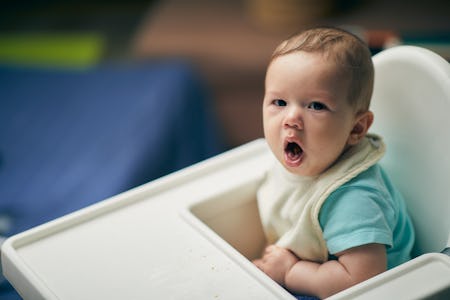Parechovirus, A Disease Deadly To Infants, Is Circulating. Here’s What To Know.
Here's everything you need to know about parechovirus — and how you can protect your family.

When it comes to infant health, there are a few common but serious illnesses parents know to look out for. But the Centers for Disease Control and Prevention (CDC) recently released a warning about one you may not be familiar with that’s currently circulating: parechovirus.
What Is Parechovirus?
Like RSV, one of the big scary viruses for infants, parechovirus has mild symptoms in older kids but can be deadly serious for young babies, and it’s currently making the rounds.
On Wednesday, the CDC issued an alert warning physicians and parents that the virus had been documented in several states and that all the samples collected have been for the most severe variant of the virus, PeV-A3.
Parechovirus causes a variety of symptoms. In kids from 6 months to around 5 years old, the virus can manifest in mild upper respiratory symptoms and a rash, or it could be completely asymptomatic. According to the CDC, most children have been infected with parechovirus by the time they start kindergarten.
But in younger babies and neonates, “severe illness can occur, including sepsis-like illness, seizures, and meningitis or meningoencephalitis, particularly in infants younger than [one] month.” Babies younger than 3 months are at heightened risk, and those younger than 1 month are at the most risk.
At least one newborn infected with parechovirus died in June of this year.
Parenchovirus isn't monitored in the U.S. like the flu or COVID-19, so researchers can’t compare the numbers of infections this year to previous years. But owing to the severity of the infections currently being diagnosed, clinicians and parents should be aware of the symptoms and keep a close eye on any changes in their children, especially in babies less than 3 months old.
Is Parechovirus Preventable?
Parechovirus is transmitted via respiratory droplets and through fecal-oral contact. Experts recommend keeping young infants out of public spaces. And similar to COVID-19 protocols, practice social distancing when you must take your baby out.
Hygiene protocols that we all became familiar with over the last several years will also help prevent the spread of parechovirus. Hand-washing, especially after diaper changes and contact with the public, can help.
Although symptoms can be managed by healthcare providers, there is no known treatment for parechovirus, so prevention is key.
When Should Parents Worry?
Any time an infant younger than 3 months develops a fever, parents should contact their physician — even if it’s a low fever.
Respiratory symptoms such as sneezing, runny nose, rashes, and behavior changes should all be addressed.
Severe cases of parechovirus in young infants can cause sepsis-like conditions of dramatically decreased immunity, rashes, flushed skin on the torso, irritability, seizures, and meningitis. If your infant shows any of these symptoms, contact your pediatrician immediately.